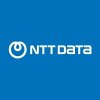
i
TCS
Filter interviews by
TCS Senior Salesforce Developer Interview Questions, Process, and Tips
TCS Senior Salesforce Developer Interview Experiences
5 interviews found
I was interviewed in Jun 2024.
(2 Questions)
- Q1. Introduce yourself
- Ans.
I am a Senior Salesforce Developer with 5+ years of experience in designing and implementing Salesforce solutions.
5+ years of experience in Salesforce development
Expertise in designing and implementing Salesforce solutions
Strong knowledge of Apex, Visualforce, and Lightning components
Experience in integrating Salesforce with external systems
Certified Salesforce Developer
- Q2. What are Salesforce governor limits
- Ans.
Salesforce governor limits are limits enforced by Salesforce to ensure efficient use of resources and prevent abuse.
Governor limits are enforced to prevent long-running or resource-intensive operations.
Examples of governor limits include limits on the number of SOQL queries, CPU time, and DML statements.
Exceeding governor limits can result in exceptions being thrown by Salesforce.
Developers need to be aware of governor...
Interview Preparation Tips
The questions I have mentioned here are from the last interview I gave. The interviewer was in such a hurry he only asked 2 questions and dropped. Another interviewer asked me intro about my self again as he joined late and that's it. My interview was finished.
I am a candidate with 7.5 years experience. They need to show a little bit of respect to the candidates for making time to give interviews but this company is one of the worst I have come across ever. I have heard they are even asking to come to office on all 5 days. Everyone knows how good their hikes are.
My point to others : do not expect anything from this company. Join this only if your current position, role and salary are worser than what these guys are offering.
Skills evaluated in this interview
(2 Questions)
- Q1. How to subscribe for a platform event ??
- Ans.
To subscribe for a platform event, use the CometD library or the EMP Connector
Use the CometD library to subscribe to platform events
Use the EMP Connector (Enterprise Messaging Platform) to subscribe to platform events
Specify the event channel to subscribe to in the code
- Q2. How many type of prise rule in salesforce cpq
- Ans.
There are two types of price rules in Salesforce CPQ.
There are two types of price rules in Salesforce CPQ: Product Rules and Discount Schedule Rules.
Product Rules are used to set pricing based on specific product configurations or attributes.
Discount Schedule Rules are used to apply discounts based on predefined discount schedules.
Interview Preparation Tips
Skills evaluated in this interview
I applied via Company Website and was interviewed in Nov 2023. There was 1 interview round.
(3 Questions)
- Q1. Jest basic LWC and trigger example and scenario based
- Q2. What is flow and automation type
- Ans.
Flow and automation types are tools in Salesforce used to automate business processes and streamline workflows.
Flows are declarative automation tools that allow users to design and automate business processes by creating visual workflows.
Automation types include Process Builder, Workflow Rules, and Approval Processes, which automate repetitive tasks and streamline processes.
Examples of automation types include automati...
- Q3. What is new features of salesforce
- Ans.
Some new features of Salesforce include Lightning Web Components, Einstein Voice, and Salesforce Blockchain.
Lightning Web Components allow developers to build custom components using modern web standards.
Einstein Voice enables users to interact with Salesforce using natural language processing.
Salesforce Blockchain helps organizations securely share data and processes across multiple parties.
Skills evaluated in this interview
What people are saying about TCS






I applied via Approached by Company and was interviewed in Feb 2024. There was 1 interview round.
(1 Question)
- Q1. Given a Indian banking system situation and asked me to built a salesforce based system out of it.
TCS interview questions for designations

(3 Questions)
- Q1. What is difference between custom settings and custom metadata
- Ans.
Custom settings are hierarchical data that can be accessed using code, while custom metadata are metadata types that are customizable at the metadata level.
Custom settings are hierarchical data that can be accessed using code
Custom metadata are metadata types that are customizable at the metadata level
Custom settings can be used to store data that needs to be accessed by code, such as application settings or user prefe...
- Q2. Rest API service
- Q3. REST API is a simple and powerful web service based on RESTful principles. It exposes all sorts of Salesforce functionality via REST resources and HTTP methods. For example, you can create, read, update, a...
Skills evaluated in this interview
Get interview-ready with Top TCS Interview Questions
Interview questions from similar companies

I applied via Referral and was interviewed before Apr 2021. There were 2 interview rounds.
Puzzles, Psychometric Test
(1 Question)
- Q1. Some water in 3 Jars question, you had to measure out 5L correctly
Interview Preparation Tips

I was interviewed in Sep 2016.
Interview Questionnaire
3 Questions
- Q1. Tell me about yourself
- Ans.
I am a passionate software developer with experience in Java, Python, and web development.
Experienced in Java, Python, and web development technologies
Strong problem-solving skills and ability to work in a team
Completed multiple projects including a web-based inventory management system
- Q2. Simple coding questions..Basically pattern.
- Q3. And also they will ask about your projects.
Interview Preparation Tips
Experience: 60 multiple choice questions so have to manage time carefully.
Tips: Have to give equal importance to all the sections..So try to do well in all section.
Duration: 1 hour 30 minutes
Total Questions: 60
Round: Technical + HR Interview
Experience: Don't panic...Only write those things that you know in your resume.
Skills: Smart Coding
College Name: Jaypee Institute Of Information Technology, Noida

I was interviewed in May 2017.
Interview Preparation Tips
Total Questions: 20
Round: Group Discussion
Duration: 1 hour
Skills: Coding Skills And Knowledge On Data Structures

I was interviewed in Jun 2017.
Interview Preparation Tips
Duration: 1 hour 30 minutes
Skills: Engineering Basics

I was interviewed in May 2017.
Interview Preparation Tips
Duration: 7 hours
College Name: Andhra university
TCS Interview FAQs
Tell us how to improve this page.
TCS Interviews By Designations
- TCS System Engineer Interview Questions
- TCS Software Developer Interview Questions
- TCS Software Engineer Interview Questions
- TCS Assistant System Engineer Interview Questions
- TCS Assistant System Engineer Trainee Interview Questions
- TCS IT Analyst Interview Questions
- TCS Ninja Interview Questions
- TCS Java Developer Interview Questions
- Show more
Interview Questions for Popular Designations
- Salesforce Developer Interview Questions
- Salesforce Administrator Interview Questions
- Salesforce Consultant Interview Questions
- Salesforce Developer Trainee Interview Questions
- Application Development Team Lead Interview Questions
- Salesforce Administrator and Developer Interview Questions
- Salesforce Business Analyst Interview Questions
- Software Developer Interview Questions
- Show more
TCS Senior Salesforce Developer Interview Process
based on 6 interviews
1 Interview rounds
- Technical Round
Senior Salesforce Developer Interview Questions from Similar Companies
Fast track your campus placements
TCS Senior Salesforce Developer Reviews and Ratings
based on 3 reviews
Rating in categories
|
System Engineer
1.1L
salaries
| ₹0 L/yr - ₹0 L/yr |
|
IT Analyst
66.6k
salaries
| ₹0 L/yr - ₹0 L/yr |
|
AST Consultant
51.5k
salaries
| ₹0 L/yr - ₹0 L/yr |
|
Assistant System Engineer
29.8k
salaries
| ₹0 L/yr - ₹0 L/yr |
|
Associate Consultant
29.5k
salaries
| ₹0 L/yr - ₹0 L/yr |

Amazon

Wipro

Infosys

Accenture
- Home >
- Interviews >
- TCS Interview Questions >
- TCS Senior Salesforce Developer Interview Questions




















